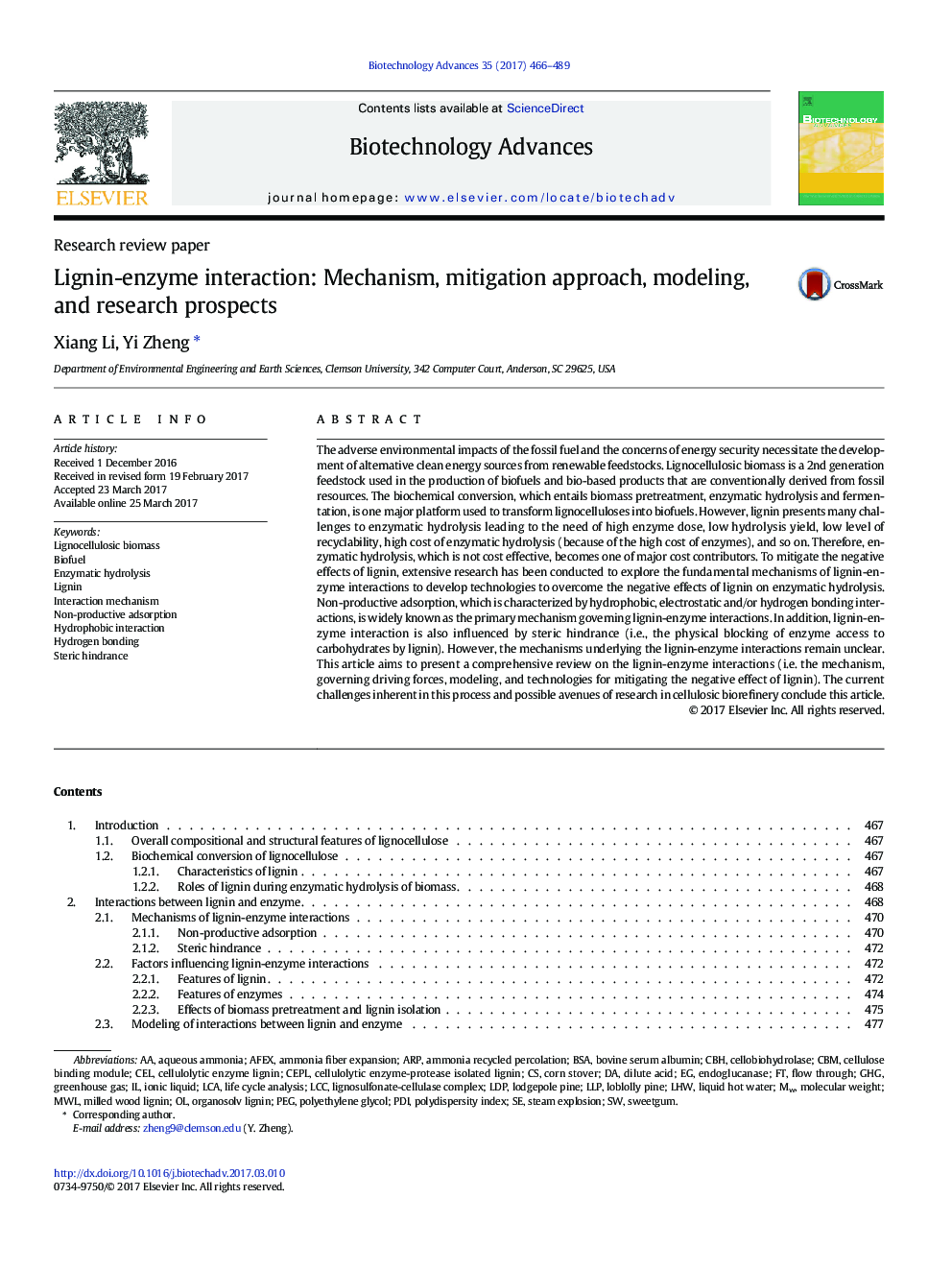| کد مقاله | کد نشریه | سال انتشار | مقاله انگلیسی | نسخه تمام متن |
|---|---|---|---|---|
| 6451151 | 1361327 | 2017 | 24 صفحه PDF | دانلود رایگان |
The adverse environmental impacts of the fossil fuel and the concerns of energy security necessitate the development of alternative clean energy sources from renewable feedstocks. Lignocellulosic biomass is a 2nd generation feedstock used in the production of biofuels and bio-based products that are conventionally derived from fossil resources. The biochemical conversion, which entails biomass pretreatment, enzymatic hydrolysis and fermentation, is one major platform used to transform lignocelluloses into biofuels. However, lignin presents many challenges to enzymatic hydrolysis leading to the need of high enzyme dose, low hydrolysis yield, low level of recyclability, high cost of enzymatic hydrolysis (because of the high cost of enzymes), and so on. Therefore, enzymatic hydrolysis, which is not cost effective, becomes one of major cost contributors. To mitigate the negative effects of lignin, extensive research has been conducted to explore the fundamental mechanisms of lignin-enzyme interactions to develop technologies to overcome the negative effects of lignin on enzymatic hydrolysis. Non-productive adsorption, which is characterized by hydrophobic, electrostatic and/or hydrogen bonding interactions, is widely known as the primary mechanism governing lignin-enzyme interactions. In addition, lignin-enzyme interaction is also influenced by steric hindrance (i.e., the physical blocking of enzyme access to carbohydrates by lignin). However, the mechanisms underlying the lignin-enzyme interactions remain unclear. This article aims to present a comprehensive review on the lignin-enzyme interactions (i.e. the mechanism, governing driving forces, modeling, and technologies for mitigating the negative effect of lignin). The current challenges inherent in this process and possible avenues of research in cellulosic biorefinery conclude this article.
Journal: Biotechnology Advances - Volume 35, Issue 4, July 2017, Pages 466-489
